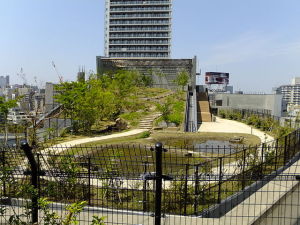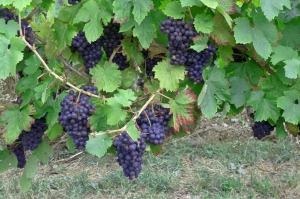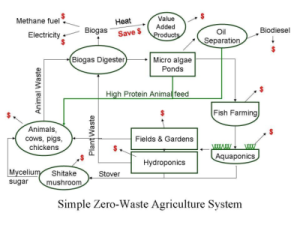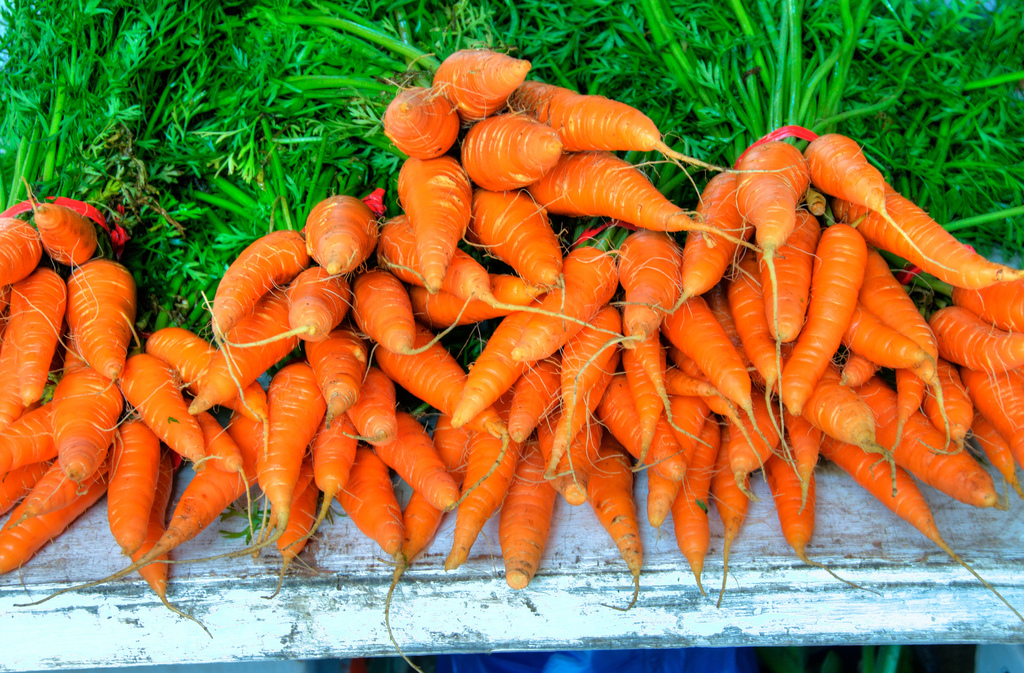Many shoppers in the United States are already aware that buying local can help the local economy. This practice can also help local farmers, improve the freshness of consumers’ products and also fight climatic changes. But some people only have the option to take action or contribute to local farming by buying from a local farmer’s market. However, scientists and ecopreneurs are already experimenting and coming up with new ideas to incorporate local farming within urban lifestyles.
Nourishing the planet will become increasingly difficult as the global population reaches nine billion by the year 2050. Along with growing population, there will also be an increase in pollution, pressure on agriculture and diminishing environmental resources. It is predicted that 60% of the global population will reside in the urban areas by the year 2030. Feeding the huge urban population will become more challenging, and so, it has become necessary in many cities of the world to practice urban agriculture and to come up with innovative solutions for growing and distributing food in urban environments.
Urban farmers have to come up with creative ways to maximize space and fit their operations into an urban environment. Limited space has not stopped urban farmers from raising livestock, fish and growing fruits and vegetables in cities. Below are some of the innovative ideas compiled from around the world.
1. Food Field, Detroit, MI
 Food Field is an urban farm built on a unique site that offers Community-Supported Agriculture (CSA) that provides economic support as well as delicious fresh farm produce for the community. Noah Link and Alex Bryan created Peck Produce in 2011. They converted the old site of an elementary school in Detroit into a revitalized farm, with a mission to create an alternative to the corporate food system. The local community has been enjoying the project of Food Field and been supporting them by either purchasing locally grown farm fresh produce and eating the sustainable produce in weekly CSA boxes, in restaurants or by volunteering on the farm. With the latest technology and aquaponic systems, Food Field has expanded even more in recent years. They produce a wide variety of food for the community including salad favorites and other vegetables. (Food Tank)
Food Field is an urban farm built on a unique site that offers Community-Supported Agriculture (CSA) that provides economic support as well as delicious fresh farm produce for the community. Noah Link and Alex Bryan created Peck Produce in 2011. They converted the old site of an elementary school in Detroit into a revitalized farm, with a mission to create an alternative to the corporate food system. The local community has been enjoying the project of Food Field and been supporting them by either purchasing locally grown farm fresh produce and eating the sustainable produce in weekly CSA boxes, in restaurants or by volunteering on the farm. With the latest technology and aquaponic systems, Food Field has expanded even more in recent years. They produce a wide variety of food for the community including salad favorites and other vegetables. (Food Tank)
2. Sky Green, Singapore
 Singapore is a very small country with very few farm lands where only seven percent of vegetables come from locally grown produce. Sky Green is a low carbon hydraulic water-driven, vertical urban vegetable farm that is the world’s first urban solutions to achieving enhanced green sustainable production of safe, fresh and delicious vegetables, using minimal land, water and energy resources. (Sky Green)
Singapore is a very small country with very few farm lands where only seven percent of vegetables come from locally grown produce. Sky Green is a low carbon hydraulic water-driven, vertical urban vegetable farm that is the world’s first urban solutions to achieving enhanced green sustainable production of safe, fresh and delicious vegetables, using minimal land, water and energy resources. (Sky Green)
3. GrowUp Box, London, UK
Kate Hofman and Tom Webster converted a 20 foot shipping container, the GrowUp Box, and specially adapted it to raise tilapia inside while greens are cultivated in vertical columns on top. This ensures urban farming while minimizing the global impacts and also reduce pressure on agriculture. This urban farming method utilizes aquaponic methods where the water from the fish tank is re-circulated to feed the plants.
4. Pasona Group, Tokyo, Japan
Pasona Group is a staffing company in Tokyo, Japan, which has very different offices from the typical ones that you’ll find anywhere else. What set this office apart from other offices are there are tomatoes dangling from the ceiling, herbs that grow in meeting rooms and a rice paddy as the lobby centerpiece.
5. The Distributed Urban Farming Initiative, Bryan, Texas
 The Distributed Urban Farming Initiative (DUFi) located in Bryan, Texas has demonstrated how urban farming can become a source of healthy food for the community to enjoy by transforming vacant lots in the city into urban farms. DUFi describes themselves as “more than a garden.” Their end goal of the project “is not simply to build gardens around town, but rather use local agriculture to encourage healthy food choices, promote good health and spur economic growth through entrepreneurship and tourism.” (DUFi)
The Distributed Urban Farming Initiative (DUFi) located in Bryan, Texas has demonstrated how urban farming can become a source of healthy food for the community to enjoy by transforming vacant lots in the city into urban farms. DUFi describes themselves as “more than a garden.” Their end goal of the project “is not simply to build gardens around town, but rather use local agriculture to encourage healthy food choices, promote good health and spur economic growth through entrepreneurship and tourism.” (DUFi)
Urban farming has many benefits and it’s the trend of agriculture of the future. EPA has said in an article titled: Urban Agriculture & Improving Local, Sustainable Food Systems that “An urban farm or community garden can improve the environment, reduce greenhouse emissions, and improve access to healthy, locally grown food.”
6. Garden Fresh Farms, Maplewood, MN
 Garden Fresh Farms, located in Maplewood, MN is another great example of sustainable agriculture, where Full-Circle Agricultural Techniques & Methods are being used. To obtain a zero-waste full-circle farm fish is raised indoors in fish tanks where the waste from fish tanks is used as fertilizer for vegetable gardens. Water from fish tanks is pumped into large produces fields, providing nutrients for the plants and increasing the yield and harvest of crops. It’s also the first urban farm to win Family Farm of the Year in Minnesota. (Click here to view the replay of the live weekly huddle webinar.)
Garden Fresh Farms, located in Maplewood, MN is another great example of sustainable agriculture, where Full-Circle Agricultural Techniques & Methods are being used. To obtain a zero-waste full-circle farm fish is raised indoors in fish tanks where the waste from fish tanks is used as fertilizer for vegetable gardens. Water from fish tanks is pumped into large produces fields, providing nutrients for the plants and increasing the yield and harvest of crops. It’s also the first urban farm to win Family Farm of the Year in Minnesota. (Click here to view the replay of the live weekly huddle webinar.)
Urban farming is becoming increasingly popular around the world as it has become necessary to increase global food production to tackle food demands and also to minimize global impacts. It also reduces pressure on agriculture and wastage of energy because when food is grown locally, there is no energy wasted for transportation. It also has health benefits for those working on urban farms by promoting health and physical activity, increasing community connections, attracting economic activity and creating more jobs.
Urban Agriculture is a great way that we can ensure enough food supply for the future growth of the global population, which is going to be mostly in urban areas. The innovations of today may become solutions for tomorrow, so these ideas are really something to ponder.
Thinking of starting an urban agriculture project? Book a meeting with us to discuss how to get started!
Source: Nourish the Planet
Resources & Related articles:
- Urban Agriculture & Benefits of Growing Your Own Food | Nourish The Planet
- The Causes And Effects Of Global Climatic Changes | Nourish The Planet
- Aquaponics – the Answer to the Global food Crisis | Nourish The Planet
- Full-Circle Agricultural Techniques & Methods | Nourish The Planet
- Food Tank
- GrowUp Box
- PASONA-Human Resource Solutions
- Urban Agriculture & Improving Local, Sustainable Food Systems | US EPA
photo credit: Ed Yourdon via photopin cc



